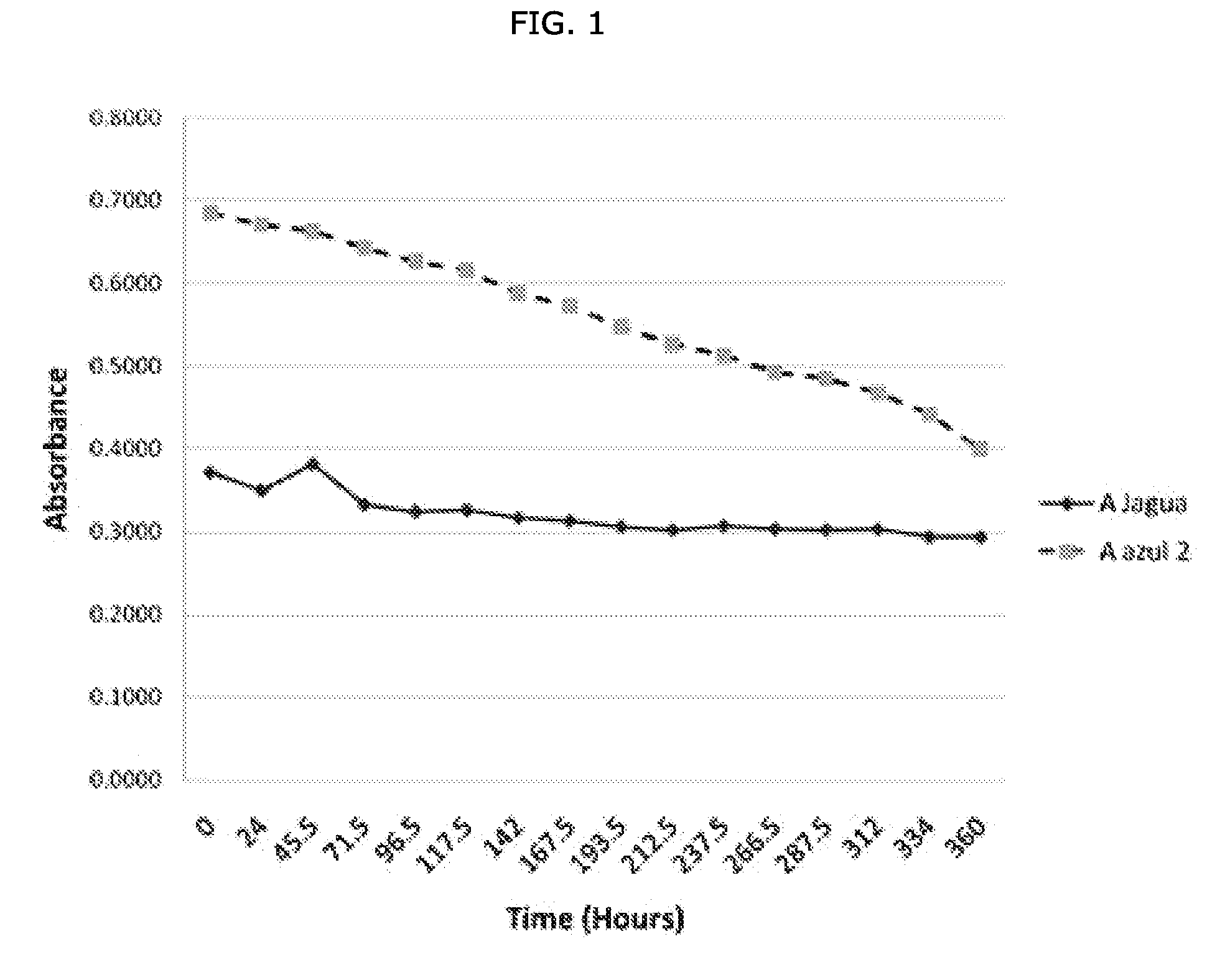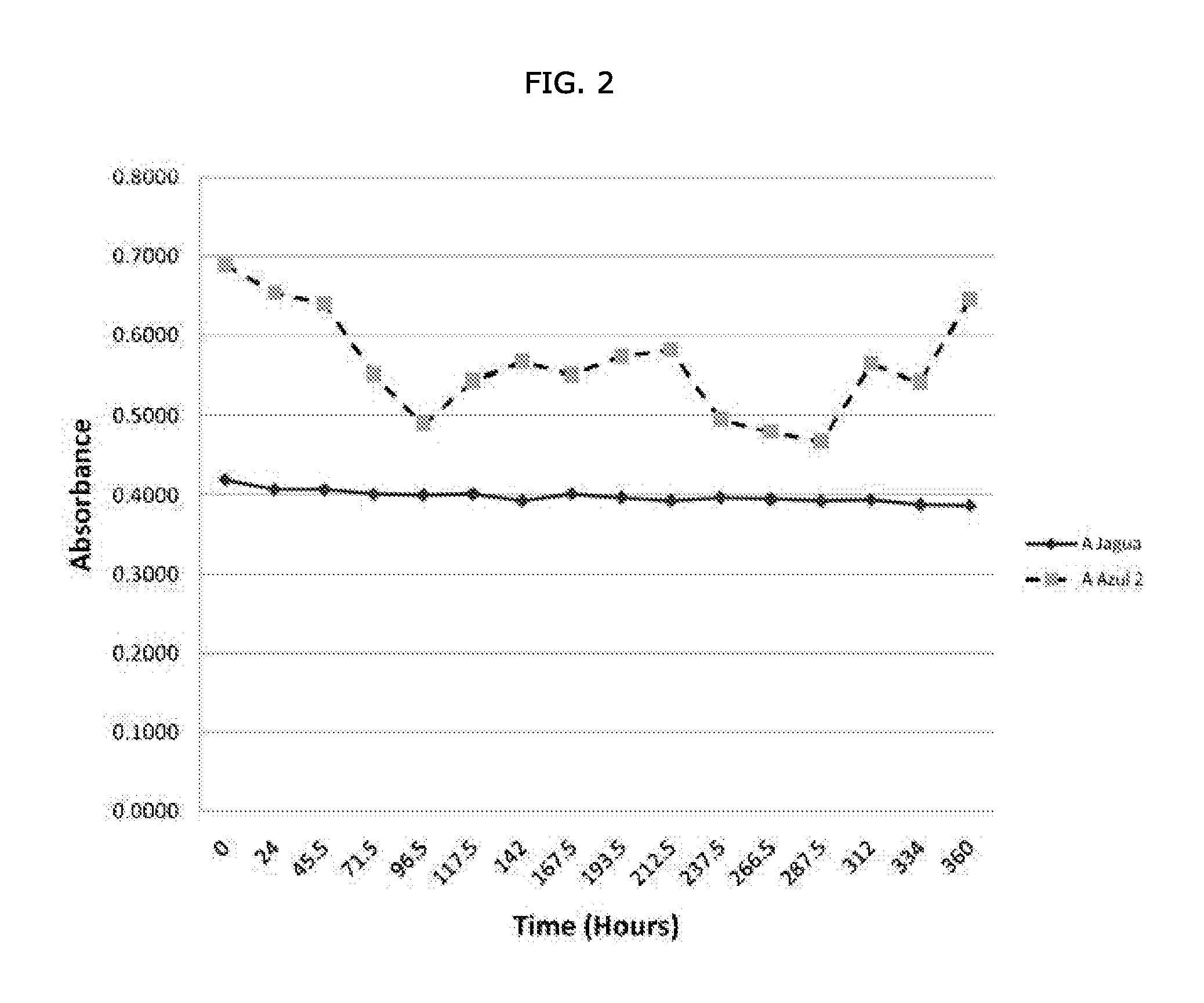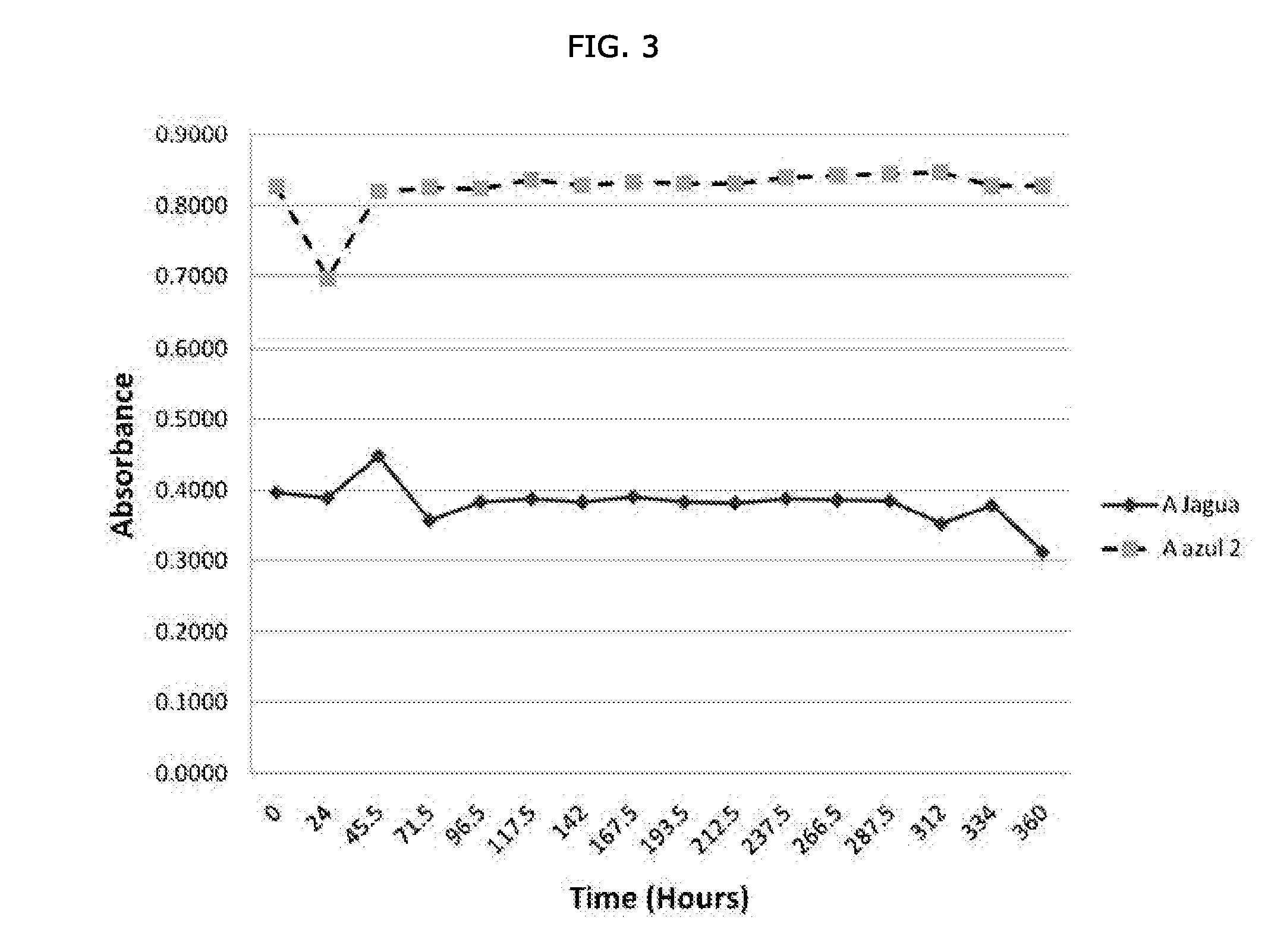Blue colorant derived from Genipa americana fruit
a technology of genipa americana and blue colorant, which is applied in the field of colorant making methods, can solve the problems of no description of stable colorant, wide range of applications, and disfavored synthetic colorants today
- Summary
- Abstract
- Description
- Claims
- Application Information
AI Technical Summary
Benefits of technology
Problems solved by technology
Method used
Image
Examples
examples
[0095]The liquid colorant of the present invention, which for the purpose of the test was called Jagua (AJagua), was tested for stability in a concentration of 0.01 grams / 40 ml and compared with synthetic colorant Blue No.2 (Azul 2) (0.0003 grams / 40 ml). Both tested compounds were maintained for 15 days under the following conditions:[0096]6° C. (Centigrade) at pH 3, pH 5, pH 7, pH 9, and pH 7.17[0097]20° C. (Centigrade) at pH 3, pH 5, pH 7, pH 9, and pH 7.17[0098]50° C. (Centigrade) at pH 3, pH 5, pH 7, pH 9, and pH 7.17
[0099]Results of said testing can be observed in the graphics of FIGS. 1 to 15.
PUM
 Login to View More
Login to View More Abstract
Description
Claims
Application Information
 Login to View More
Login to View More - R&D
- Intellectual Property
- Life Sciences
- Materials
- Tech Scout
- Unparalleled Data Quality
- Higher Quality Content
- 60% Fewer Hallucinations
Browse by: Latest US Patents, China's latest patents, Technical Efficacy Thesaurus, Application Domain, Technology Topic, Popular Technical Reports.
© 2025 PatSnap. All rights reserved.Legal|Privacy policy|Modern Slavery Act Transparency Statement|Sitemap|About US| Contact US: help@patsnap.com



